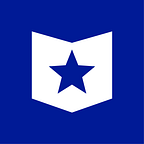Of Monsters and Dragons: A Beowulf Infographic
The epic poem Beowulf has all the trappings of a Disney movie: the hero faces and defeats two monsters (Grendel and Grendel’s mother) and becomes the king.
But fifty years into his reign, the king takes on his greatest challenge yet: a dragon is disturbed and some gold he’s been hoarding stolen. The dragon seeks revenge, and the hero sets off to save his kingdom. All but one of the king’s warriors abandon him in fear, and though seemingly overmatched, the pair defeat the dragon.
This is where the poem deviates from a Disney fairy tale: Beowulf is fatally wounded, and the tale closes with an elaborate burial for the fallen hero.
Though the tale of Beowulf was likely written sometime around the 8th century by two monks in England, it was probably put in its current form in the 11th century by a Christian scribe. Even so, its medieval origins continue to have an enormous impact on 20th and 21st century fantasy pop culture.
As Course Hero’s infographic on Beowulf shows, pop culture has borrowed extensively from the poem — sometimes directly referencing Beowulf (as in Star Trek and in Xena). More often, we’ve seen Beowulf shaping literature and film through monster outcast and dragon characters (e.g., Godzilla, The Hobbit, Shrek, How the Grinch Stole Christmas, Harry Potter, and even Game of Thrones) and through battles between man and beast.
In the case of The Hobbit (see infographic), there’s an even greater connection: 11 years before publishing The Hobbit in 1937, J.R.R. Tolkien completed a translation and commentary of Beowulf.
Want to see more Course Hero infographics? Check out our full collection here, and keep checking back for more!
Originally published at www.coursehero.com on March 22, 2016.
